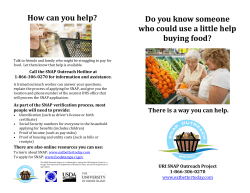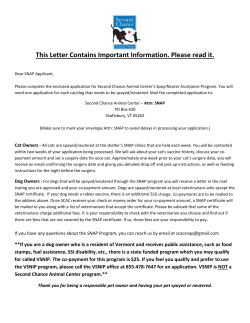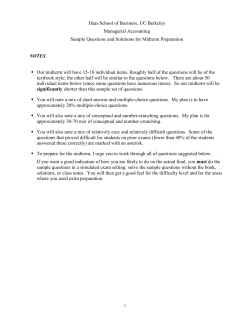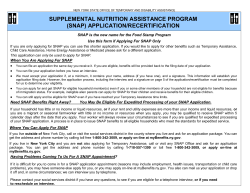
Title: Repeating Patterns: Progressing With Patterns
Title: Repeating Patterns: Progressing With Patterns Brief Overview: Students will explore patterns using a variety of manipulative and recording activities. They will copy, continue, extend, and create patterns, using formal language. (Term, core, symbol.) NCTM Content Standard: Algebra: Understanding patterns: • Recognize, describe, and extend patterns and translate from one representation to another. • Analyze how repeating patterns are generated. • Describe, extend, and make generalizations about patterns. • Represent and analyze patterns using words. Grade/Level: Grades 2/3 Duration/Length: Three 50-minute lessons. Student Outcomes: Students will: • • • Identify, copy, label and extend repeating patterns using a variety of attributes to include: shape, size, and color. Represent manipulative patterns in symbolic form. Construct repeating patterns, using no more than three objects with a total core of five. Materials and Resources: Lesson One • Laminated sentence strips for each student • Overhead color tiles • Snap cubes • Teacher Checklist (TR1) • Coloring materials • Pattern Cards (TR2 a, b, c, d) • Finish the Pattern (SR1) • Patterning at Home (SR2) Lesson Two • Laminated sentence strips • Teacher Checklist (TR1) • Overhead color tiles • Snap cubes • Overhead markers for each student • • • • Example of Labeling (TR 3) Pattern Cards (TR2 a, b, c, d) Can You Label Me? (SR3) ABC Pattern Cards (TR4) Lesson Three • Laminated sentence strips • Overhead color tiles • Pattern blocks (for teacher and students) • Snap cubes • Overhead markers • ABC Pattern Cards (TR4) • Pattern BCR (SR4) • Various materials for patterning (buttons, coins, counters, etc…) Development/Procedures: Lesson 1 Preassessment/Launch – • • • • • • Prior to lesson, set out laminated sentence strips, different colored snap cubes, a pile of Pattern Cards (TR 2 a, b, c, d), and coloring materials for student use. (e.g. in a bin in the center of each table group.) Begin by asking a group of 6 students to come to the front of the room. The teacher will then organize the students in a row and in a pattern with the first student standing, the second sitting, repeating until all six students are positioned. Call on students to continue the pattern. Students can then join the pattern at the front of the room. Continue the activity until all the students are part of the pattern. Repeat the activity with another body position, (e.g. arms folded/arms straight, hands on their head/hands on hip, boy/girl etc…) Teacher Facilitation – • • • • • On the overhead, model the same pattern using snap cubes. (Example: Red, Blue, Red, Blue.) Tell students to take a laminated sentence strip and a handful of snap cubes. Students should copy the pattern onto their laminated sentence strip by placing the snap cubes in the correct order. Ask the students to predict what will come next in the pattern and why. Continue with further pattern examples on the overhead (e.g. Red, Blue, Green, Red, Blue, Green or Red, Green, Green, Red, Green, Green) and discuss with the students, asking questions such as, “What do you think will come next?” “Why?” “Could you show this pattern in another way?” Student Application – • Introduce children to the Pattern Cards (TR2 a, b, c, d). Hold up one of the laminated Pattern Cards to show the students. Explain that their task will be to reproduce the pattern that they see on the card. They will make this pattern on their laminated sentence strip. After copying the pattern, they must add the correct snap cubes to extend the • • • • pattern by repeating the original pattern twice. Once they have finished a pattern card, they can pick another one from the pile. Students will continue this activity individually, copying basic patterns using the colored Pattern Cards (TR2 a, b, c, d.) on their laminated sentence strips. Students can check each other’s patterns to reinforce comprehension of activity. Introduce worksheet Finish the Pattern (SR1). Students will use coloring materials to color and extend the given patterns. Answer key can be found on TR3. Homework: Students will complete worksheet Patterning at Home (SR2). Answer key can be found on TR4. Embedded Assessment – • • Teacher will observe students working through activities, monitoring level of understanding as each concept is covered. Use teacher checklist (TR1) to record observations of student comprehension. Reteaching/Extension – • • Reteaching: Take those, as a group, who cannot yet understand sequencing and re-teach, keeping the pattern sequence simple, (e.g. ABAB,) adding to this slowly. Extension: Students who have mastered the concept can create more involved patterns. They can reciprocate with a partner. Lesson 2 Preassessment/Launch • • • • Prior to lesson, set out laminated sentence strips, different colored snap cubes, a pile of Pattern Cards (TR2 a, b, c, d), overhead markers for student use. (e.g. in a bin in the center of each table group.) Begin with a brief review of lesson 1. Teacher will put an ABC pattern on the overhead, using color tiles. (e.g. Red, Blue, Green, Red, Blue, Green.) Ask students to identify the pattern and explain how it would be continued. Ask a student to come and demonstrate. Students can then copy the pattern on their sentence strip. Teacher Facilitation • • • • • Before beginning this activity, be sure to look over the teacher guide, Example of Labeling (TR5), as an example of what you want the final labeled pattern to look like. This will lead your instruction. Begin the process of giving each color a symbolic representation. “If red is first, we give it the symbol A. If red is A, blue can be B. If we follow this order, what will green be?” (C) “Now here is another red. What symbol did we give red already?” (A) Students should then label their own patterns using the symbols A, B, C on their laminated sentence strip. Check that all students are following directions before proceeding. Referring to the ABC pattern on the overhead, ask how many pieces are in the original sequence, (A, B, C) and explain that this is the basis of the pattern and is called a “Core.” • • • • • • • • Model the task of underlining the core on the overhead, and labeling it “Core.” Students can then underline the core they have made on their sentence strip, and label it, using an overhead marker. Ask how many pieces they have underlined. The answer should of course be three. Ask students to clear the sentence strip and erase the labels. Then put a different pattern with an ABB core on the overhead (e.g. Red, Green, Green), and repeat the activity, again asking students to label the core symbolically. Then ask, “How many cubes are there in the core?” Teacher can then ask the students to circle each cube in the core. Tell students that mathematically we call each of these cubes a “Term,” and continue to ask “How many terms are in this core?” You may want to repeat with further examples. (e.g. ABC, ABA.) Label each part of the fraction with the students. Student Application • • • • • Continue modeling and labeling these examples until students show an understanding of the concept. Working individually, students can then use Pattern Cards (TR2 a, b, c, d.) to copy the patterns on their laminated sentence strips using snap cubes. Remind students to give each snap cube a symbol, underline the core, and to circle the terms. Students can check each other’s patterns to reinforce comprehension of activity. Homework: Students will complete worksheet, Can you Label Me? (SR3). Answer key can be found on TR6. Embedded Assessment • Teacher observation and continue to complete the Teacher Checklist. (TR1) Reteaching/Extension • Reteaching: Monitor students’ understanding, and review concept with those who are having difficulty. • Extension: For students who have a clear understanding of repeating and labeling patterns correctly, challenge them with the ABC Pattern Cards (TR4). Students will create the symbol pattern seen on the ABC Pattern Cards using the snap cubes. • An additional activity for all students could be Pattern Blocks Online. Here students can use online pattern blocks to build their own patterns. A basic grid is provided with movable shapes at the side. Students can move shapes over to the grid to create their own patterns. A variation to this activity would be to use the Pattern Cards or the ABC Pattern Cards to give students an outline to follow. Students can work individually or in pairs. This activity can be found at the following website: http://www.arcytech.org/java/patterns/patterns_j.shtml Lesson 3 Preassessment/Launch • • • • • • Prior to lesson, set out laminated sentence strips, different colored snap cubes, a pile of ABC Pattern Cards (TR7), a variety of pattern blocks, overhead markers for student use, and an assortment of objects for patterning. (e.g. in a bin in the center of each table group.) On the overhead, place a pattern of ABC (e.g. red, green, blue, red, green, blue) using your overhead snap cubes. Review the use of vocabulary: symbol, term, and core using the overhead and the ABC pattern. Identify and label these parts. Then, leaving the snap cubes on the overhead, place the pattern blocks underneath using the same pattern. (e.g. square , rhombus, triangle, square, rhombus, triangle) Ask questions: “What do you notice about these two patterns?” “What do you see that is the same?” “What differences do you see?” “What else can you see?” Next, label the pattern block pattern with the vocabulary: symbol, term, and core. This may also lead into more discussion about the two patterns. Teacher Facilitation • • • • • • Using color tiles, place a new ABC pattern onto the overhead. (e.g. blue, green, red, blue, green, red) Ask for volunteers to continue building the pattern on the overhead. Have students tell you the symbols for each term. Ask students if they could create this same pattern using pattern blocks. Have a volunteer build this on the overhead. Ask the student “How do you know which pattern blocks to use?” “What do you know about the tile pattern that helped you create the pattern block pattern?” “What symbols represent each shape?” “Does anyone else have anything to add?” Talk about how they are creating this and let this stir discussion. Clear the overhead and create another ABB pattern using only symbols (e.g. A B B A B B) Students can generate their own pattern on their laminated sentence strip, using the symbols you have provided. Students should be able to choose whether they use pattern blocks or snap cubes to create their pattern. Teacher should monitor creation and pull students back together to share the patterns they’ve created. Ask students to explain their pattern and how they know their pattern is correct. Ask students, “Why don’t your patterns all look the same?” “Is your pattern correct, even if it doesn’t look like other patterns at your table?” Encourage students to work as a table group to find all of the different ways they could create that pattern. Student Application • • • • • Working in pairs, have students create patterns using the ABC Pattern Cards (TR7) at their tables. These cards are designed with a pattern using only symbols. Students will have to copy the symbol pattern using either the pattern blocks or snap cubes. This will measure student understanding of the symbols and translating the pattern from symbolic to concrete. Before students begin the partner activity, record the following questions on the board. “How are your patterns alike?” “How are your patterns different?” One student will pull a Pattern Card from the pile. Both students should create the same pattern using materials of their choice onto their laminated sentence strip. Have students label the core and the terms. Have students compare their pattern with their partner’s pattern using the focus questions on the board to lead their discussion. • After they complete a card, they must clear their sentence strip and choose another ABC Pattern Card from the pile. Repeat the steps. Embedded Assessment • • Twenty minutes before the end of the session, ask students to put away materials and clear working area. Distribute BCR (SR 4) for students to complete, reminding them to give as much information as possible. Reteaching/Extension • Reteaching:Teacher can re-model limiting pattern cards to simple ABC patterns, and assist with recording. Another reteach activity could be to give children access to the Internet. Patterns: What Comes Next? is a basic activity that requires students to click on the next term in the pattern. The patterns are simple and the terms provided are interesting and appealing in subject and design. Students are able to see the core of the pattern and extend the pattern using motivational terms. This activity can be found at the following website: http://math.rice.edu/~lanius/counting/patan1.html • Extension: Provide additional materials (e.g. buttons, coins, counters, etc…) for students to copy and label. Additionally they could create their own patterns, extend, and label them. Another extension activity could be to give children access to a computer. People Patterns is an online activity where students can try to figure out who is the next person in line. Students must look at many attributes from hair color, to age, to clothing to decide who should come next in line. This is a challenging activity so make sure students begin on the Beginner’s Level. This activity can be found at the following website: http://www.learner.org/teacherslab/math/patterns/people/ Summative Assessment: • • • • Students will complete an Assessment Activity, BCR (SR4). Students will correctly extend, label, and describe the pattern in written form. Students will move from the concrete representation of a pattern to the symbolic representation of a pattern. Students will move from the symbolic representation of a pattern to the concrete representation of a pattern. Answer key can be found on TR8. Authors: Kate Wall Cranberry Station Elementary Carroll County Marilyn Yeomans Cunningham Park Elementary Fairfax County, Virginia Teacher Resource 1 Teacher Checklist Student 1. 2. 3. 4. 5. 6. 7. 8. 9. 10. 11. 12. 13. 14. 15. 16. 17. 18. 19. Can the student copy the pattern? Can the student extend the pattern? Can the student label the pattern? (symbol, core, term) Can the student translate the pattern from the concrete to the symbolic? Can the student translate the pattern from the symbolic to the concrete? Can the student use various materials to create the pattern? Teacher Resource 2a Pattern Cards Teacher Directions for Pattern Cards— Pattern Cards are a great way to represent patterns to children on an independent level. Children are able to copy the given patterns and extend the pattern at their own pace. Although these cards may be time consuming to create, they are a great resource that can be used again and again. Follow these steps to create your pattern cards: 1. Use the **Pattern Core** key underneath each Pattern Card on the resource sheet to color code your pattern. The core is given and continues this pattern to fill the entire Pattern Card. 2. Once the Pattern Cards are colored, cut them out. 3. Glue the Pattern Cards onto sentence strips. 4. Laminate the sentence strips. Pattern Card Page 1 Teacher Resource 2b **Pattern Core—RED, BLUE (A,B)** **Pattern Core—RED, BLUE, GREEN (A, B, C)** **Pattern Core—RED, RED, GREEN (A, A, B)** **Pattern Core—RED, BLUE, RED (A, B, A)** Pattern Card Page 2 Teacher Resource 2c **Pattern Core—GREEN, BLUE (A,B)** **Pattern Core—RED, GREEN (A, B)** **Pattern Core—GREEN, GREEN, BLUE (A, B, B)** **Pattern Core—BLUE, BLUE, RED (A, A, B)** Pattern Card Page 3 Teacher Resource 2d **Pattern Core—RED, RED, BLUE (A, A, B)** **Pattern Core—GREEN, BLUE, RED (A, B, C)** **Pattern Core—GREEN, BLUE, GREEN (A, B, A)** **Pattern Core—BLUE, GREEN (A, B)** Student Resource 1 Finish the Pattern Directions—Continue the pattern by coloring the squares correctly. 1. RED GREEN RED GREEN 2. BLUE GREEN RED BLUE GREEN RED BLUE BLUE GREEN BLUE BLUE 3. GREEN Teacher Resource 3 Finish the Pattern Answer Key Directions—Continue the pattern by coloring the squares correctly. 1. RED GREEN RED GREEN RED GREEN RED GREEN 2. BLUE GREEN RED BLUE GREEN RED BLUE GREEN RED BLUE GREEN BLUE BLUE GREEN BLUE BLUE GREEN BLUE BLUE GREEN BLUE RED 3. GREEN BLUE Student Resource 2 Patterning at Home Directions—Continue the pattern by coloring the squares correctly. 1. BLUE GREEN BLUE GREEN 2. RED BLUE GREEN RED BLUE GREEN RED RED GREEN RED RED GREEN 3. Teacher Resource 4 Patterning at Home Answer Key Directions—Continue the pattern by coloring the squares correctly. 1. BLUE GREEN BLUE GREEN BLUE GREEN BLUE GREEN 2. RED BLUE GREEN RED BLUE GREEN RED BLUE GREEN RED BLUE GREEN RED RED GREEN RED RED GREEN RED RED GREEN RED RED GREEN 3. Teacher Resource 5 Example of Labeling The following is an example of what your overhead, and your student’s work should look like when you are finished labeling the pattern. TERM Red cube A TERM TERM Green cube Blue cube B CORE C Red cube Green cube Blue cube Student Resource 3 Can You Label Me??? Directions—1. Color the pattern. 2. Give each square a letter name. 3. Underline the core. 4. Circle the terms. 1. red blue red blue A B A B A B 2. red green blue red green blue ____ ____ ____ ____ ____ ____ green green blue green green blue ____ ____ ____ ____ ____ ____ blue green blue blue green blue ____ ____ ____ ____ ____ ____ red green green red green green ____ ____ ____ ____ ____ ____ 3. 4. 5. Teacher Resource 6 Can You Label Me??? Answer Key Directions—1. Color the pattern. 2. Give each square a letter name. 3. Underline the core. 4. Circle the terms. 1. red blue red blue red blue A B A B A B 2. red green blue red green blue __A__ __B__ __C__ __A__ __B__ __C__ green green blue green green blue __A__ __A__ __B__ __A__ __A__ __B__ blue green blue blue green blue __A__ __B__ __A__ __A__ __B__ __A__ red green green red green green __A__ __B__ __B__ __A__ __B__ __B__ 3. 4. 5. Teacher Resource 7 ABC Pattern Cards Directions for ABC Pattern Cards— 1. Make as many copies of the resource sheet as you need to accommodate the number of students in your class. 2. Cut out each Pattern Card. 3. Glue onto sentence strip. 4. Laminate for durability. ABCABC ABBABB AABAAB ABAABA Student Resource 7 Brief Constructed Response Look closely at the following pattern. Part A 1. Finish the pattern. 2. Give each shape a letter name. 3. Underline the core of the pattern. 4. Circle the terms in the pattern. 5. Part B Explain as much as you know about this pattern. Be sure to use the words from the Vocabulary Box at the bottom of the page. __________________________________________________________ Vocabulary Box Core Term Letter name Teacher Resource 8 Brief Constructed Response Look closely at the following pattern. A B A A B A A B A Part A 1. Finish the pattern. 2. Give each shape a letter name. 3. Underline the core of the pattern. 4. Circle the terms in the pattern. 5. Part B Explain as much as you know about this pattern. Be sure to use the words from the Vocabulary Box at the bottom of the page. The core of this pattern is ABA. I know this because it goes triangle, circle, triangle, and then back to triangle. There are three terms in the core. The core is repeated 3 times. I continued the pattern with another core. I underlined the triangle, circle, triangle because I know that is the core. Vocabulary Box Core Term Letter name
© Copyright 2025






![—Not Warranting it’s adequate in ... [Sample Litigation Hold Letter from ... case, but it’s an example]](http://cdn1.abcdocz.com/store/data/000030073_2-6c36fd0490099ab95b4eb05c9c11a0b9-250x500.png)













